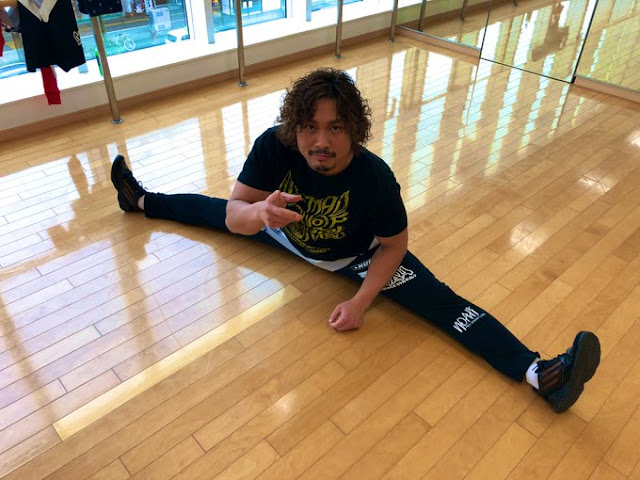Why do promotions pound rice at New Year?
The rice is pounded in a mortar called a "usu" where it is pounded repeatedly by wooden mallets known as "kine" as modelled here by Katsuhiko Nakajima and Mohammed Yone.
The rice is pounded until it forms and becomes sticky (and thanks to clumsy Ogawa, it can lift right out of the usa. Fortunately the attendant caught it and put it back in).
 |
| Akitoshi Saito photographing Genba and Harada (it was so lovely to see Saito smiling again) |
Once the mochi has reached the desired level, it is molded into various styles and shapes; it can be made with a variety of toppings (sweet, red bean, stuffed with seaweed).
Although at the end of the event, Noah left and went back into the building, they (and the crowd) would have grown up and indeed still continue a ritual for the New Year. Whether pounded in a usa with kina or store bought, the family shrines, "kamidana" (literally "spirit house") where the "kami" (household spirit or god) resides will be offered two mochi cakes. These will be placed on a sheet of white paper on a wooden tray, usually topped with bitter orange. The offerings are placed on the family altar to ask that the god grant the family a happy, peaceful and prosperous New Year.





Comments
Post a Comment
Spam will be deleted immediately